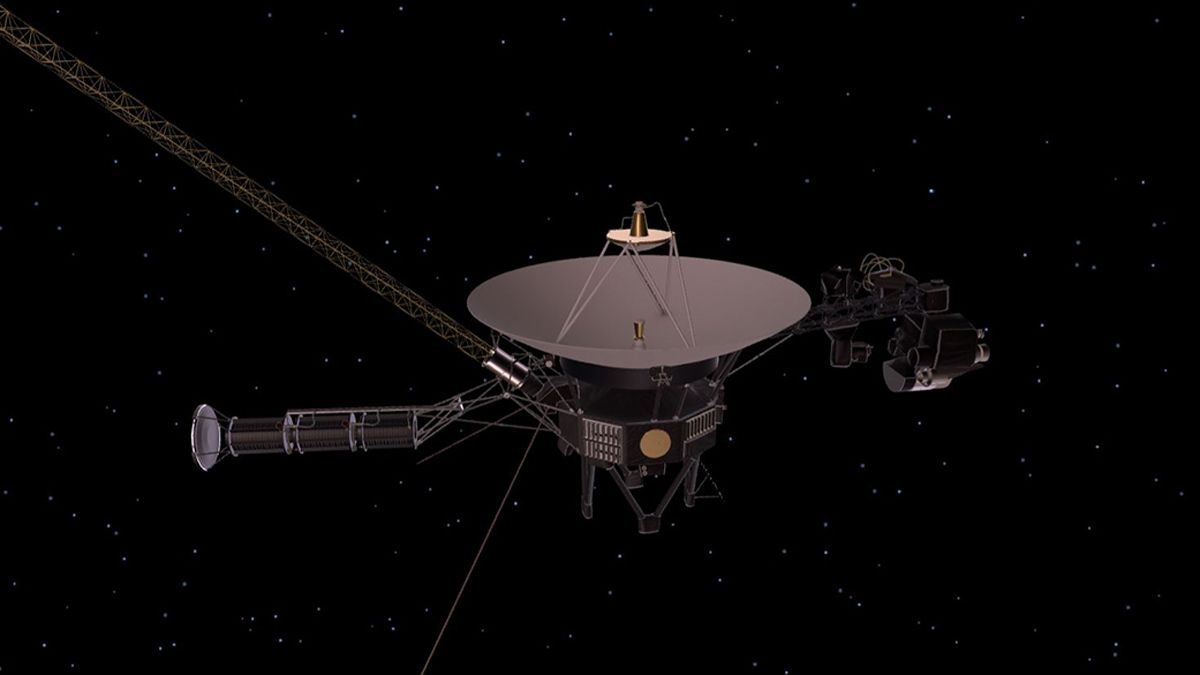
NASA's Voyager 1 probe is finally making sense again in interstellar space.
After months of sending junk data about its health to flight controllers on Earth, the 45-year-old Voyager 1 is once again beaming back clear telemetry data on its status beyond our solar system. NASA knew the problem was somewhere in the spacecraft's attitude articulation and control system, or AACS, which keeps Voyager 1's antenna pointed at Earth. But the solution was surprising.
"The AACS had started sending the telemetry data through an onboard computer known to have stopped working years ago, and the computer corrupted the information," NASA officials wrote in an update (opens in new tab) Tuesday (Aug. 30). The rest of the spacecraft was apparently fine, collecting data as it normal.
Related: Celebrate 45 years of Voyager with these amazing images (gallery)
Once engineers began to suspect Voyager 1 was using a dead computer, they simply sent a command to the probe so its AACS system would use the right computer to phone home. It was a low-risk fix, but time consuming. It takes a radio signal nearly 22 hours to reach Voyager 1, which was 14.6 billion miles (23.5 billion kilometers) from Earth and growing farther by the second as of Aug. 30.
With the Voyager 1 data glitch solved, NASA is now pondering a new mystery: what caused it in the first place.
“We're happy to have the telemetry back," Voyager project manager Suzanne Dodd said in a statement (opens in new tab). "We'll do a full memory readout of the AACS and look at everything it's been doing. That will help us try to diagnose the problem that caused the telemetry issue in the first place."
Related: Voyager 1 marks 10 years in interstellar space
Related stories:
Engineers suspect Voyager 1 began routing its health and status telemetry through the dead computer after receiving a bad command from yet another onboard computer. That would suggest some other problem lurking inside Voyager 1's computer brains, but mission managers don't think it's a threat to the iconic spacecraft's long-term health.
Still, they'd like to know exactly what's going inside Voyager 1.
"So we're cautiously optimistic, but we still have more investigating to do," Dodd said in the statement.
NASA launched the Voyager 1 spacecraft, and its twin Voyager 2, in 1977 on a mission to explore the outer planets of the solar system. Voyager 1 flew by Jupiter and Saturn during its primary mission and kept going, ultimately entering interstellar space in 2012, with Voyager 2 reaching that milestone in 2018.
You can track the status of Voyager 1 and Voyager 2 on this NASA website (opens in new tab).
Email Tariq Malik at tmalik@space.com (opens in new tab) or follow him @tariqjmalik (opens in new tab). Follow us @Spacedotcom (opens in new tab), Facebook (opens in new tab) and Instagram (opens in new tab).
Science - Latest - Google News
August 31, 2022 at 03:04AM
https://ift.tt/bT7ZRsg
NASA solves Voyager 1 data glitch mystery, but finds another - Space.com
Science - Latest - Google News
https://ift.tt/zBc3CTQ
https://ift.tt/EjkmLvc
Bagikan Berita Ini

















0 Response to "NASA solves Voyager 1 data glitch mystery, but finds another - Space.com"
Post a Comment